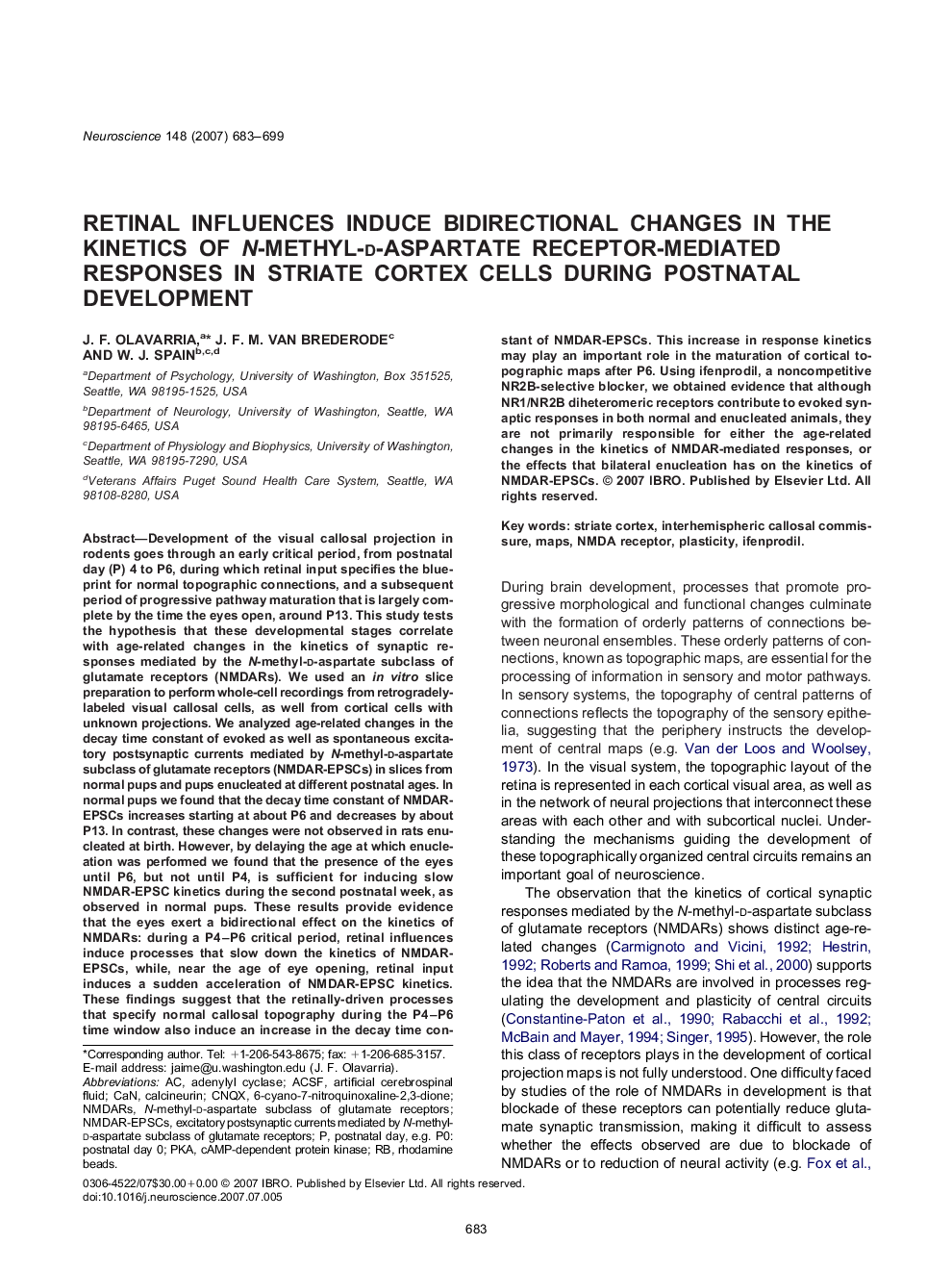| کد مقاله | کد نشریه | سال انتشار | مقاله انگلیسی | نسخه تمام متن |
|---|---|---|---|---|
| 4342576 | 1295875 | 2007 | 17 صفحه PDF | دانلود رایگان |

Development of the visual callosal projection in rodents goes through an early critical period, from postnatal day (P) 4 to P6, during which retinal input specifies the blueprint for normal topographic connections, and a subsequent period of progressive pathway maturation that is largely complete by the time the eyes open, around P13. This study tests the hypothesis that these developmental stages correlate with age-related changes in the kinetics of synaptic responses mediated by the N-methyl-d-aspartate subclass of glutamate receptors (NMDARs). We used an in vitro slice preparation to perform whole-cell recordings from retrogradely-labeled visual callosal cells, as well from cortical cells with unknown projections. We analyzed age-related changes in the decay time constant of evoked as well as spontaneous excitatory postsynaptic currents mediated by N-methyl-d-aspartate subclass of glutamate receptors (NMDAR-EPSCs) in slices from normal pups and pups enucleated at different postnatal ages. In normal pups we found that the decay time constant of NMDAR-EPSCs increases starting at about P6 and decreases by about P13. In contrast, these changes were not observed in rats enucleated at birth. However, by delaying the age at which enucleation was performed we found that the presence of the eyes until P6, but not until P4, is sufficient for inducing slow NMDAR-EPSC kinetics during the second postnatal week, as observed in normal pups. These results provide evidence that the eyes exert a bidirectional effect on the kinetics of NMDARs: during a P4–P6 critical period, retinal influences induce processes that slow down the kinetics of NMDAR-EPSCs, while, near the age of eye opening, retinal input induces a sudden acceleration of NMDAR-EPSC kinetics. These findings suggest that the retinally-driven processes that specify normal callosal topography during the P4–P6 time window also induce an increase in the decay time constant of NMDAR-EPSCs. This increase in response kinetics may play an important role in the maturation of cortical topographic maps after P6. Using ifenprodil, a noncompetitive NR2B-selective blocker, we obtained evidence that although NR1/NR2B diheteromeric receptors contribute to evoked synaptic responses in both normal and enucleated animals, they are not primarily responsible for either the age-related changes in the kinetics of NMDAR-mediated responses, or the effects that bilateral enucleation has on the kinetics of NMDAR-EPSCs.
Journal: Neuroscience - Volume 148, Issue 3, 7 September 2007, Pages 683–699